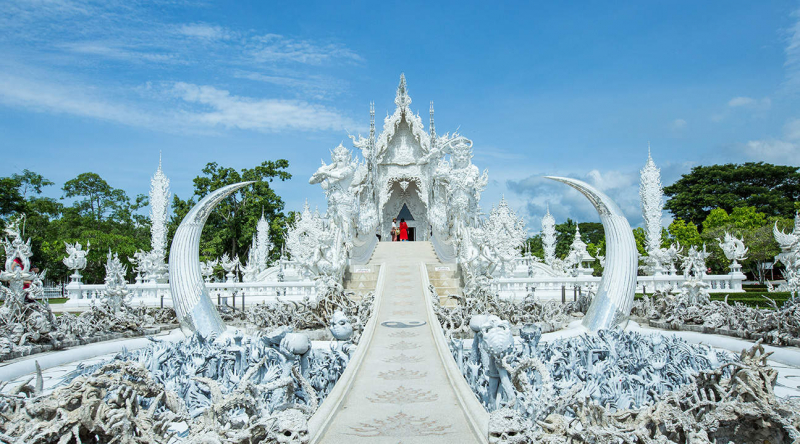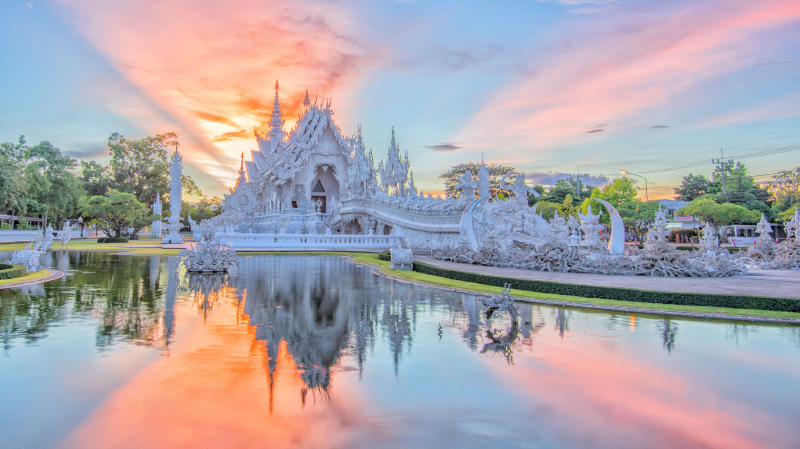Chiang Rai
Chiang Rai City is still a tranquil provincial town with a beautiful vibe. It has a more easygoing and down-to-earth atmosphere than its sister city Chiang Mai, yet it never lacks historical and cultural treasures of its own. Founded in 1262 as the capital of the Mengrai Dynasty following Chiang Saen, the city has a strong Lanna identity today, primarily via its magnificent collection of temples, art, language, food, and music. However, unlike Chiang Mai, the city provides little variety in nightlife, entertainment, and shopping, with most of these centered in the Clock Tower region.
The city's tourist industry is rapidly emerging, beginning with its Night Bazaar, Saturday Walking Street, and Jazz Festival. The riverfront is primarily undeveloped. However, there are a few luxury hotels along the way. It is preferable to charter a long-tail boat and takes in the landscape along the two riverbanks to truly experience the splendor of the Mae Kok. Chiang Rai City is all about slowing down and relishing each moment as it comes.
Temples are a big draw in Chiang Rai, as they are in other Thai cities, with Wat Rong Khun (or White Temple) at the top of the list. Wat Rong Khun is no longer a temple but rather a privately owned property restored and reconstructed by Chalermchai Kositpipat, one of Thailand's most well-known modern visual artists. Wat Tham Pla (also home to a cave and thousands of wild macaques) is another renowned temple that may be reached by descending a staircase guarded by guarding Naga serpents.
Tiny Wat Phra Kaew, famed for formerly hosting the Emerald Buddha before being relocated to Bangkok's Grand Palace and Doi Tang mountain home to a botanical park, a former royal mansion, and a temple with spectacular views–is well worth a visit.
















